Schools, colleges & higher education establishments guidance published
Amended July 2024
Our future relies on schools providing an essential development ground for the next generation. Making it a safe place for them to learn is vital and none more so than for the water systems within them.
Water companies have published new advice to help those involved with water systems in schools, colleges and higher education establishments, ensure they are compliant and safe. They would like to express their appreciation to CLEAPSS for their assistance in preparing this guide.
The advice, which does not cover universities, looks at different areas likely to be found from kitchens to plant rooms. It also provides advice on more specialist areas such as swimming pools, water conservation systems for example rainwater harvesting, as well as laboratories.
These are just some of the common facilities found in the guidance but it goes on to highlight potential risks exist and that contamination of the public water supply by backflow is a very real possibility.
Appliances which at a quick glance may appear to be similar may be treated differently because of how they are to be used. The guidance explains that certain areas within the same building, such as a laboratory setting are usually classed as non-domestic as they are likely to have contaminants of higher hazard rating.
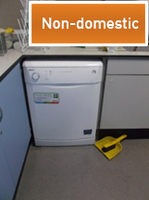
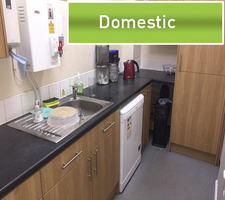
This means appliances in some non-domestic settings will require a higher level of protection usually fluid category 4 or in some cases higher. Whereas, in a kitchenette area used solely for refreshments, fluid category 3 protection may be sufficient for a similar appliance.
What is important to note is that an assessment of the individual elements making up a water supply system is required to determine the type and level of risk posed, and the backflow protection requirements to satisfy the water fittings regulations/byelaws.
Protecting from backflow
Backflow protection requirements can be achieved in a number of ways, with the most common methods covered within the advice.
Tap gaps are of the most common forms used and rely upon maintaining a defined gap between the tap outlet (or any hose or shower head) and the spillover level of the sink, bowl or receptacle below it.
In some cases these protective air gaps can be reduced to the extent that any protection they offered has been removed, as can be seen in some of these examples.
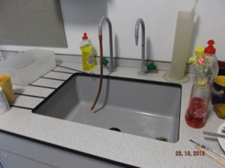
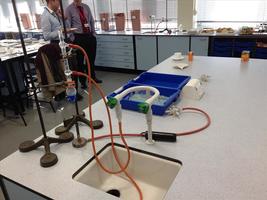
In these situations alternative arrangements will be required upstream of the taps which is usually in the form of a supply from a storage cistern. If the gravity-fed flow from the cistern is inadequate, the installation of a booster pump on the supply from it may be an option. However, the water supplier’s consent will be required for the installation of any pump which can deliver more than 12 litres per minute.
Schools often find fittings have been installed without fully understanding how tutors are planning to use them in their lessons this can create problems. For example, Type DC devices on the end of taps have been widely used in school laboratories but these are not designed to provide a water flow at pressure as needed for some for some laboratory equipment, such as a Liebig condenser. Creating a restriction at the outlet of the type DC device will create a back pressure and cause water to discharge through the protective air holes in the device. It is never acceptable to block these holes – if you have these installed you may need to seek specialist advice to find an appropriate alternative solution.
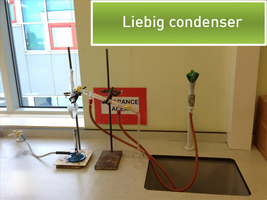
This has been a particular problem for both schools and water industry. The advice highlights the importance for early consultation and notification, not only with the school and their staff, but the local water company as well.
Five key points to remember- |
See the Guidance section for more information and publications.

